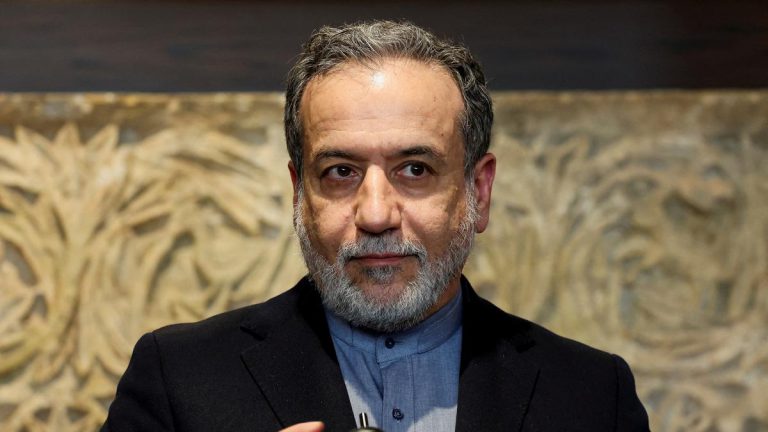(Bloomberg Opinion) — Every strategist knows that wars are not just won by force. Soft power matters, which is why the Trump administration’s latest move to bar Harvard University from enrolling international students will resonate so badly across Asia.
America and China are already locked in a battle for influence — but Washington risks sabotaging those goals. Even before the Harvard controversy emerged Thursday, the US embassy in Singapore posted a video on social media this week likening China’s sweeping South China Sea territorial claims to disputes over shared spaces in Singapore’s public housing blocks. It did more than just raise eyebrows.
The online clip landed with a thud, touching a national nerve. More than 80% of Singaporeans live in public housing — a highly prized source of social and economic stability, and many voiced their complaints online.
China’s embassy responded, accusing the US of distorting the facts and being a “hypocritical preacher,” while Singapore said it “rejects attempts by foreign embassies here to incite domestic reactions to international issues involving third countries.” The city-state is usually measured in tone, so this public reprimand stood out. While it didn’t name either China or the US, the message appeared to be clearly directed at Washington.
Still, America remains a beacon for many in the region, a land of opportunity where young Asians aspire to study, work, and build their futures. But those ambitions are at risk with the Trump administration’s latest move, which Harvard has called unlawful. This is hardly the way to win over the next generation, particularly if this extends to more universities.
India sends the most number of students to study in the US, with 331,602 in the 2023-2024 school year, according to the Institute of International Education, while China sends the second highest, with 277,398 students. Many are likely to be future leaders in government and industry, potentially instrumental in nurturing later relations. Just look at the current crop of Indian-origin tech leaders in the US, including Microsoft Corp. Chief Executive Officer Satya Nadella, who studied at the University of Chicago Booth School of Business, or the chief executive officer of Alphabet Inc. Sundar Pichai, who went to the Wharton School of the University of Pennsylvania.
Beijing is already leading the economic game. Around 70% of countries trade more with China than they do with America, according to the Lowy Institute. Compare that to 2001, the year China acceded to the World Trade Organization, when over 80% of nations had a larger volume of trade with America. It is almost a direct reversal.
In contrast, the White House has strained trade relations with allies and partners alike. President Donald Trump announced higher tariffs on scores of nations on April 2, but later paused them for 90 days, as investors panicked and markets fell. But duties are still higher than before he was elected. This has rattled Asian countries, which are trying to negotiate better terms for their economies.
Soft power is the latest arena to sway opinions. Washington is merely paralleling what Beijing has regularly done, notes Ja Ian Chong, associate professor in political science at the National University of Singapore. “This is a feature of the intensifying competition,” he told me. “The Americans feel pressured to respond to the narrative China is pushing. As the world grows more contested, we’ll see more of this.”
Beijing’s diplomatic outreach has been known to be aggressive, but the change in tone was really noticeable around 2019, when ambassadors and the foreign ministry took to social media to push back against the first Trump administration’s characterization of the world’s second-largest economy as an unfair trade partner. This was dubbed “wolf warrior diplomacy,” a reference to a 2015 nationalist action movie.
The pandemic raised tensions even further. Both sides used social media and memes to shape their narratives. China’s state-run Xinhua News Agency released videos mocking the American pandemic response, though Beijing’s own Covid-Zero strategy would later collapse following public protests.
Meanwhile, the US military reportedly launched a secret social media campaign to undermine China’s growing influence in the Philippines, casting doubt about the safety of vaccines supplied by Beijing, according to a Reuters investigation. Washington also ramped up its own pandemic aid, pledging $274 million in assistance through the State Department and USAID, in addition to earlier contributions to the World Health Organization and UNICEF.
That reality no longer holds true. In March, the Trump administration canceled 83% of American foreign aid contracts, leaving a vacuum China was only too happy to fill. The reaction to the recent 7.7 magnitude earthquake in Myanmar is a case in point. Chinese and Russian teams were among the first to provide emergency response personnel and key supplies, while aid cuts significantly limited the US response. Just this week Beijing announced it will give an additional $500 million to the World Health Organization over five years, which would help make up the US shortfall.
America remains the most important security partner to many nations in the region. Still, the relentless economic tensions, White House mood swings and now actions that jeopardize the education of some of Asia’s brightest future leaders will lose the US friends in a region that has long admired it. A reassessment is overdue.
More From Bloomberg Opinion:
This column reflects the personal views of the author and does not necessarily reflect the opinion of the editorial board or Bloomberg LP and its owners.
Karishma Vaswani is a Bloomberg Opinion columnist covering Asia politics with a special focus on China. Previously, she was the BBC’s lead Asia presenter and worked for the BBC across Asia and South Asia for two decades.
More stories like this are available on bloomberg.com/opinion










